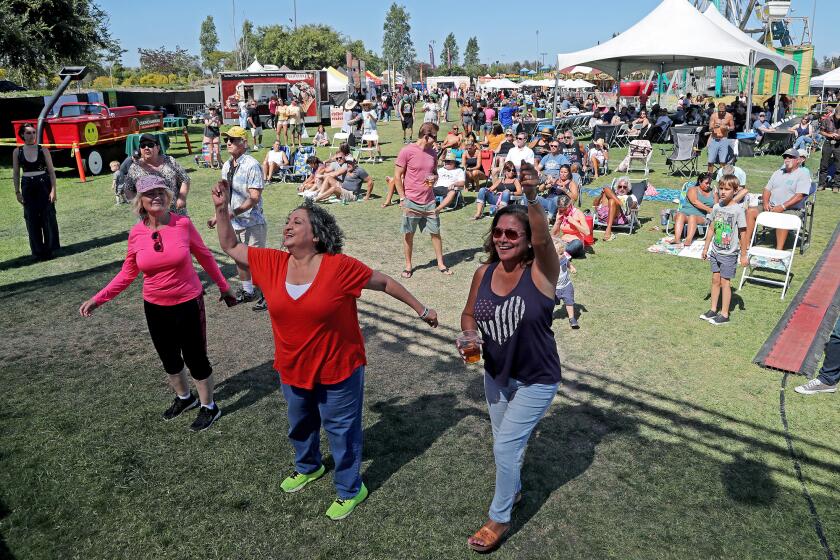GARDEN FANATIC:The heavenly bougainvillea
- Share via
“Earth is a task garden; heaven is a playground.”
“When man was put in the Garden of Eden he was put there so that he should work, which proves that man was not born to rest.”
“You won’t go to heaven, if you don’t clean up the bougainvillea flowers first.”
I must have heard those words at least a thousand times while I was growing up in Laguna. However, I wasn’t old enough at the time to realize that it wasn’t my grandmother’s gentle Buddhist belief of heaven she was quoting... Oba-chan was merely repeating the edicts of the fundamentalist minister who was our neighbor at the time.
No plant is more characteristic of Laguna than the ubiquitous bougainvillea. Its spectacular colors last most of the year. Depending on how you prune... the vigorous vine, bank cover, hanging basket, shrub, or tree will delight you with its extravagant color display. It is one plant that will thrive on general neglect once it is established.
The bougainvillea is native to Brazil and named for Louis Antoine de Bougainville, a French navigator. The flowers are small and hardly visible... the color comes from the large, showy bracts.
Colors range from purplish to crimson in the cultivars Barbara Karst and San Diego Red, to deep bronze and gold and salmon in the cultivars Afterglow, Orange King, and California Gold (Catharine’s favorite). Planting cultivars of different colors together can produce exciting combinations.
Bougainvilleas are ideally suited to Laguna’s mild coastal climate. They grow and bloom best in full sun and in soil that is well drained. Windy locations should be avoided if possible. Minimum water after the plant is established produces maximum flowering and minimum leaf growth. Applications of a general-purpose fertilizer should be applied from late spring through summer.
Most plants are rampant growers and require plenty of space and/or frequent pruning. A few cultivars such as Temple Fire and Raspberry Ice are compact and make excellent ground covers or can be planted to cascade over garden walls.
Bougainvillea may be grown overhead on trellises, on roofs, or on walls. They may also be trained to form hedges or clipped for formality. Many gardeners have used them extensively as potted plants, and they are even trained to make small street trees in South America.
Transplanting bougainvillea must be undertaken with the utmost care. Root balls are easily broken, because the plant doesn’t form a firm root ball in a container. Rough handling often results in fatally damaging the extremely sensitive roots. Prior to setting the container in a hole, cut out the bottom. Then slice the container from top to bottom and remove the sides.
I missed out on more beach days, baseball at Riddle Field, and midday movies, because of my failure to finish sweeping up the bougainvillea bracts to my grandmother’s satisfaction.
But even though I approached my task, as described by our neighborly minister, “in a rather earthly manner,” I knew that at dinner, my work would be rewarded by my grandmother’s heavenly Japanese cooking. See you next time.
All the latest on Orange County from Orange County.
Get our free TimesOC newsletter.
You may occasionally receive promotional content from the Daily Pilot.



